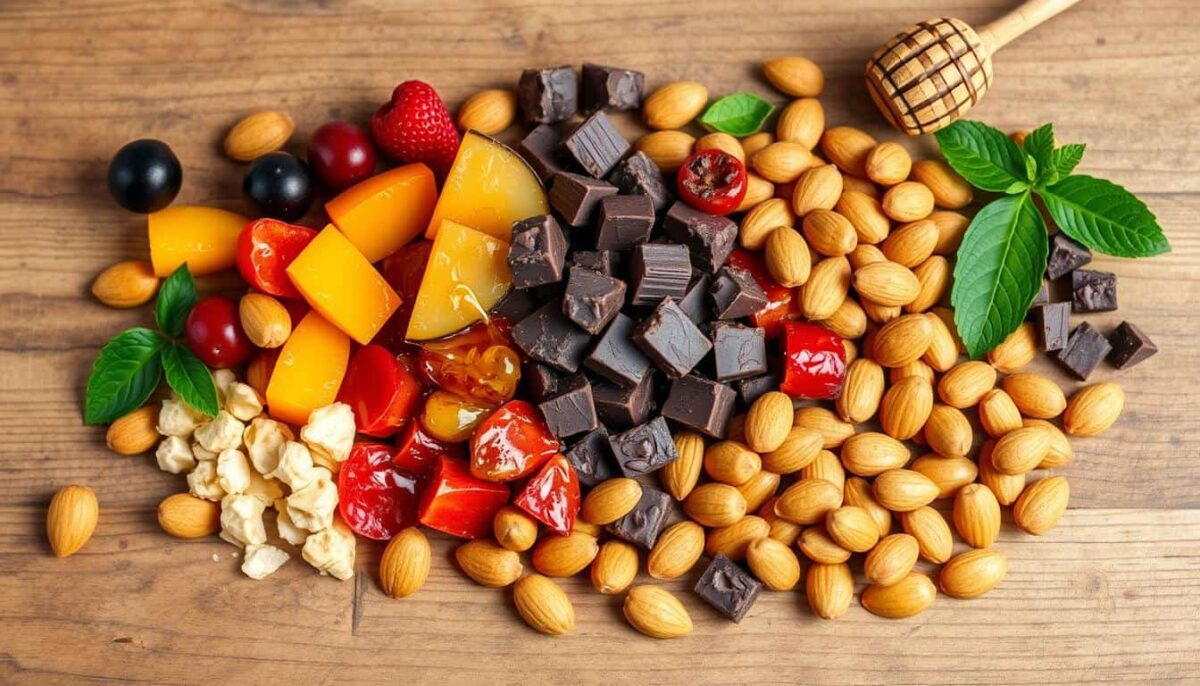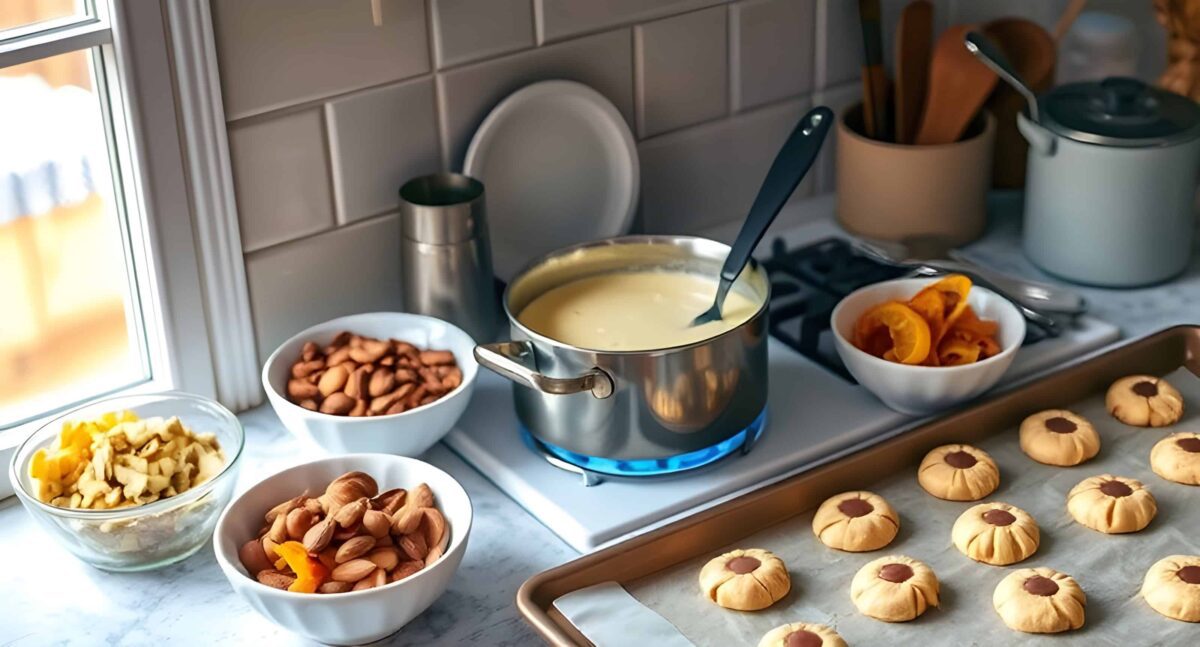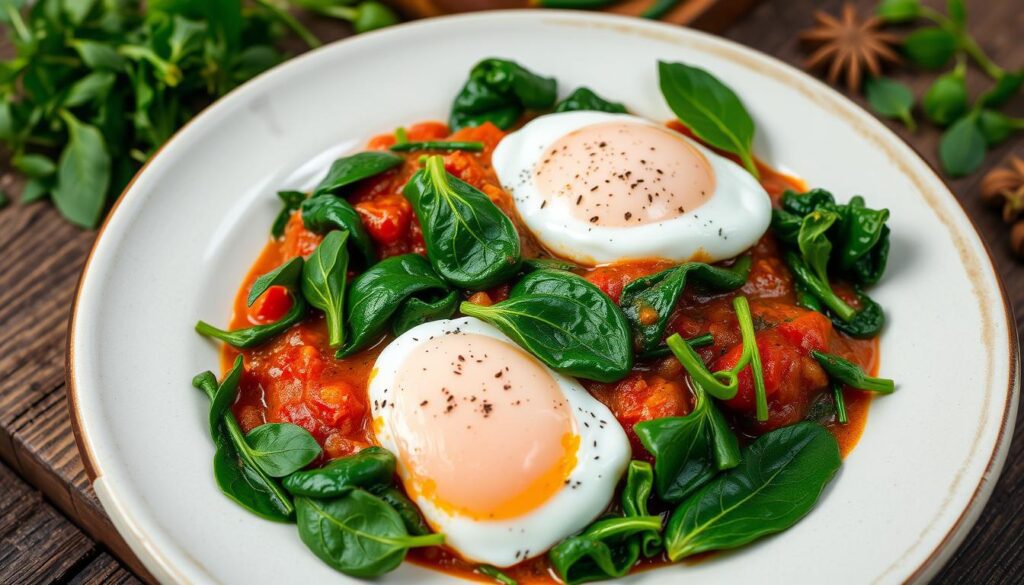Florentine cuisine is a cherished aspect of Italian gastronomy, boasting a rich history and unique ingredients that captivate food enthusiasts worldwide. But what exactly makes Florentine dishes so special? Let’s dive into their rich origins and explore the elements that define this culinary treasure, from signature ingredients to historical significance. For a deeper insight into the luxurious side of Florentine cuisine, don’t miss this exploration of Expensive Florentine Pastries.
The secret to an exceptional Florentine dish lies in its high-quality ingredients and traditional cooking methods. Ever wondered what goes into making an authentic Florentine creation? We’ll uncover the classic ingredients and techniques that have stood the test of time, solidifying Florentine cuisine as a beloved staple of Italian culture.
Originating in Renaissance Florence, Florentine cuisine is celebrated for its distinct flavors and heritage. Over the centuries, modern innovations have enhanced its appeal while remaining true to its roots. Let’s delve into the recipes and uncover what makes Florentine cuisine a true Italian delight cherished by generations.

1. The Rich History Behind Florentine Cuisine
Florentine cuisine has a rich history, starting in Renaissance Florence. The city’s culture and food scene shaped this iconic Italian cuisine. It has kept its unique flavor, mixing old ingredients with new ways of cooking.
The history of Florentine cuisine is linked to Florence’s art and culture. In the Renaissance, Florence was a center of creativity. Artists, writers, and chefs from all over Italy came here. This exchange brought new ingredients and cooking methods to traditional dishes. Florentine cooking method has grown, influenced by many cultures, making it special and tasty.
Some key events in the history of Florentine cuisine include:
- The introduction of new ingredients from the New World, such as tomatoes and peppers
- The influence of Mediterranean cuisine, with its emphasis on olive oil, garlic, and herbs
- The development of traditional Florentine dishes, such as spinach florentine and ribollita
Today, Florentine cuisine keeps changing, with chefs adding new ingredients and techniques. Yet, it still values fresh, seasonal ingredients and simple flavors. Whether you try traditional florentine cuisine or modern twists, its history and culture will amaze and inspire you.
To understand Florentine cuisine’s history and growth, we must look at its parts and influences. Next, we’ll explore the ingredients and dishes that make this cuisine unique and delicious.
2. What Does Florentine Consist Of? A Detailed Breakdown
To understand what does florentine consist of?, we need to look at its ingredients. Florentine is a mix of nuts, seeds, chocolate, and candied fruits. These are all held together by a rich sauce.
When making Florentine, knowing the florentine cooking process is key. The classic sweet Florentine is a must-try. But, there’s also a savory version, like spinach Florentine, that’s just as tasty.
Here are the main ingredients for your Florentine dish:
- Nuts: almonds, hazelnuts, or walnuts
- Seeds: sesame seeds or pumpkin seeds
- Chocolate: dark, milk, or white chocolate
- Candied fruits: citron, orange peel, or cherries
Knowing what goes into Florentine is vital for making it at home. By following the florentine cooking process and using the right ingredients, you can make a delicious Florentine dish.
| Ingredient | Description |
|---|---|
| Nuts | Almonds, hazelnuts, or walnuts |
| Seeds | Sesame seeds or pumpkin seeds |
| Chocolate | Dark, milk, or white chocolate |
| Candied Fruits | Citron, orange peel, or cherries |

3. Classic Sweet Florentine Components
The traditional florentine dish is a mix of flavors and textures. It combines nuts and seeds with rich chocolate and candied fruits. To make a classic sweet florentine, you need to know the key ingredients. These include nuts, seeds, chocolate, and candied fruits.
A classic florentine recipe has a few main ingredients:
- Almonds and hazelnuts for added crunch
- Dark chocolate for a rich and velvety texture
- Candied fruits, such as orange and lemon, for a burst of sweetness
These ingredients blend together to create a dish with a perfect balance of tastes and textures. This makes the classic sweet florentine a unique and tasty treat.
When making a traditional florentine dish, use high-quality ingredients and follow a classic recipe. This ensures the best results. By mixing nuts and seeds with chocolate and candied fruits, you’ll make a classic sweet florentine that will impress.
The binding ingredients are what keep the classic sweet florentine together. They make the dish cohesive and delicious. Knowing the key components of a traditional florentine meal helps you make a classic sweet florentine that’s both authentic and tasty.
| Ingredient | Quantity | Description |
|---|---|---|
| Almonds | 1 cup | Sliced or slivered almonds for added crunch |
| Dark Chocolate | 1 cup | Rich and velvety dark chocolate for a decadent treat |
| Candied Fruits | 1 cup | Candied orange and lemon for a burst of sweetness |
4. Traditional Savory Florentine Ingredients
Traditional savory Florentine dishes focus on blending flavors and textures. They use fresh, quality ingredients like spinach, garlic, and herbs. These are mixed with creamy sauces. Knowing the florentine recipe breakdown is key to mastering Florentine cooking.
A traditional savory Florentine dish has a few main ingredients:
- Fresh spinach, which is nutritious and flavorful
- Garlic and herbs, like parsley and basil, for depth and aroma
- Creamy sauces, such as bechamel or hollandaise, for richness and texture
- Cheese, like parmesan or mozzarella, for a salty, savory taste
By carefully combining these traditional florentine ingredients, cooks can make many tasty dishes. Whether it’s a classic spinach Florentine or something new, knowing the basics is crucial.
5. The Art of Spinach Florentine
Spinach florentine is a dish that captures the heart of Florence’s culinary world. It’s known for its rich flavors and delicate textures. Choosing between fresh or frozen spinach is a big decision. Some say fresh spinach is key for the best taste, while others believe frozen spinach works just as well.
The cream and cheese you pick are also very important. Florentine cooking ingredients like garlic, nutmeg, and black pepper add depth. Adding herbs like parsley, basil, or thyme can make the dish even better.
Some popular ways to make spinach florentine include:
- Adding cooked chicken or shrimp for extra protein
- Trying different cheeses, like parmesan or feta
- Adding red pepper flakes for a spicy touch
In short, spinach florentine is all about simplicity and elegance. It’s great for special occasions or just a regular meal. Using top-notch ingredients and trying new variations can make it unforgettable.
| Ingredient | Quantity |
|---|---|
| Spinach | 1 package frozen, thawed and drained |
| Cream | 1 cup heavy cream |
| Cheese | 1 cup grated parmesan cheese |

6. Essential Cooking Techniques for Perfect Florentine
To master Florentine cooking, you need to know the florentine cooking method. It’s all about mixing nuts, seeds, chocolate, and candied fruits. This mix creates a perfect balance of flavors and textures.
Choosing fresh, high-quality ingredients is key. You’ll need the right spinach, cheese, and herbs. These help make a dish that looks great and tastes amazing.
- Understanding the importance of temperature control
- Mastering the art of combining ingredients
- Presenting the dish in a visually appealing way
By using these techniques and the right florentine dish components, you’ll make a dish that wows everyone. It’s sure to impress your friends and family.
7. Common Variations and Regional Adaptations
Florentine cuisine has changed over time. You can find different versions in various regions and cultures. These changes can spark new recipes and cooking methods, keeping Florentine cuisine alive and exciting. The ingredients in florentine dishes vary a lot, depending on where you are and the culture.
A florentine recipe can be made to fit different tastes. For instance, Northern Italian Florentine is known for its rich, creamy sauces. On the other hand, international versions might use new and exotic ingredients. Some common changes to Florentine dishes include:
- Northern Italian style, with its rich and creamy sauces
- International interpretations, with new and exotic ingredients
- Modern twists, with innovative cooking techniques and ingredients
These changes show how florentine cuisine is diverse and flexible. They prove that the traditional florentine recipe can be seen in many ways. By trying these variations, cooks and food lovers can find new tastes and techniques. This keeps the tradition of Florentine cuisine fresh and exciting.
| Region | Variation | Ingredients |
|---|---|---|
| Northern Italy | Rich and creamy sauces | Butter, cream, Parmesan cheese |
| International | New and exotic ingredients | Spices, herbs, citrus fruits |
| Modern | Innovative cooking techniques | New ingredients, cooking methods |

8. Tips for Achieving Authentic Florentine Texture
To make a real florentine dish, focus on the texture. It’s all about temperature control and timing in florentine cooking. Mastering these skills makes your florentine creations both tasty and beautiful.
For the best traditional florentine ingredients, mix crunch, smoothness, and flavor. Here are some tips for the perfect texture:
- Control the temperature: Make sure your ingredients are at the right temperature before cooking.
- Timing is everything: Watch the cooking time to get the right texture balance.
- Use the right ingredients: Pick traditional florentine ingredients that are fresh and of high quality.
Follow these tips to make a florentine dish that’s both tasty and true to its roots. Remember, the more you practice, the better you’ll get. So, don’t be shy to try new things in your florentine cooking journey.
With these techniques and tips, you’re on your way to making authentic florentine dishes. You’ll show off the best of traditional florentine ingredients and florentine cooking methods.
| Ingredient | Texture | Tip |
|---|---|---|
| Spinach | Smooth | Use fresh spinach for the best flavor and texture. |
| Cheese | Creamy | Choose a high-quality cheese that melts well. |
| Nuts | Crunchy | Toast nuts before adding them to your dish for extra crunch. |
9. Pairing and Serving Suggestions
To make your florentine cooking process even better, think about how to pair and serve it. A great best florentine recipe needs the right sides to bring out its flavors. The mix of textures and tastes is crucial.
Understanding how different foods go with your florentine dish is key. For example, a sweet florentine pairs well with a bold wine, while a savory one goes great with a fresh salad. Here are some ideas for pairing and serving your florentine dishes:
- Pair sweet florentine with a dessert wine or a fruit tart
- Combine savory florentine with a side of roasted vegetables or a hearty grain dish
- Experiment with different garnishes, such as fresh herbs or edible flowers, to add a pop of color and fragrance to your dish
By carefully choosing your pairings and servings, you can make your florentine dish unforgettable. Whether it’s a classic sweet florentine or a new savory one, the right sides can make it stand out. Your guests will surely remember it.
The secret to great pairing and serving is to enhance the natural flavors of your best florentine recipe. This way, you’ll show off all the flavors and textures of your florentine cooking process. You’ll create a memorable florentine meal components experience.
10. Storing and Preserving Florentine Dishes
To keep your Florentine dishes fresh and flavorful, knowing how to store them is key. A detailed florentine recipe breakdown will show you which ingredients in florentine need extra care when storing.
Storage Methods
There are several ways to store Florentine dishes. These include:
- Airtight containers to keep flavors and textures intact
- Refrigeration to slow down spoilage
- Freezing for longer storage
Shelf Life Guidelines
The shelf life of Florentine dishes varies based on storage and ingredients. Cooked dishes can last up to 3 days in the fridge or 2 months in the freezer. Always follow the right florentine recipe breakdown and storage tips to keep your dishes safe and tasty.
11. The Recipe
Print
Florentine Chicken with Creamy Spinach Sauce
- Total Time: 30 minutes
- Yield: 4 servings
Description
Florentine Chicken with Creamy Spinach Sauce is the perfect fusion of elegance and comfort, combining tender chicken breasts with a rich, creamy sauce infused with fresh spinach and Parmesan cheese. This dish embodies the essence of Florentine cuisine, offering a balance of hearty flavors and sophisticated presentation.
Ideal for weeknight dinners or special occasions, this recipe comes together quickly without sacrificing flavor. The creamy spinach sauce, enhanced with a touch of nutmeg and lemon, elevates the dish to restaurant-quality perfection. Serve it with a side of crusty bread or pasta for a complete Italian-inspired meal that’s sure to impress your family or guests.
Ingredients
– 4 boneless, skinless chicken breasts
– 2 tablespoons olive oil
– 1 teaspoon salt
– 1/2 teaspoon black pepper
– 1 teaspoon garlic powder
– 3 tablespoons unsalted butter
– 3 cloves garlic, minced
– 2 cups fresh spinach, chopped
– 1 cup heavy cream
– 1/2 cup grated Parmesan cheese
– 1/4 teaspoon nutmeg
– Juice of 1/2 lemon
Instructions
1. Season the chicken breasts with salt, pepper, and garlic powder on both sides.
2. Heat olive oil in a large skillet over medium heat. Add the chicken breasts and cook for 5-7 minutes on each side until golden brown and fully cooked. Remove from the skillet and set aside.
3. In the same skillet, melt the butter over medium heat. Add the minced garlic and sauté for 1 minute until fragrant.
4. Add the chopped spinach to the skillet and cook until wilted, about 2-3 minutes.
5. Reduce the heat to low and stir in the heavy cream, Parmesan cheese, and nutmeg. Simmer gently for 3-4 minutes until the sauce thickens.
6. Squeeze the lemon juice into the sauce and stir well. Return the cooked chicken breasts to the skillet, spooning the sauce over them. Let simmer for 2-3 minutes to warm through.
7. Serve immediately, garnished with extra Parmesan if desired.
- Prep Time: 10 minutes
- Cook Time: 20 minutes
FAQ
What are the traditional ingredients in Florentine cuisine?
Traditional Florentine sweets include nuts, seeds, chocolate, and candied fruits. Syrups or creams are used to bind these ingredients. This creates a balanced flavor.
How do you make Florentine?
Making Florentine starts with preparing the ingredients. This includes toasting nuts and melting chocolate. Then, you mix everything together with sauces or creams. Knowing the right techniques is key to getting it just right.
What is the history of Florentine cuisine?
Florentine cuisine began in Renaissance Florence. It has grown over the years, influenced by many cultures. Today, it’s a cherished part of Italian food heritage.
What are some common variations and regional adaptations of Florentine?
Florentine has changed over time, influenced by many cultures. You can find many variations, from Northern Italian to international and modern takes. Each has its own flavor and style.
How do you achieve the authentic Florentine texture?
Getting the right Florentine texture is all about temperature and timing. It’s important to control the heat and cooking time. This ensures the perfect crunch and flavor.
Conclusion
Learning florentine cooking is like a dance of flavors and textures. It shows the deep history and culture of Florence. This Italian dish is more than a recipe; it’s a form of art that has grown over time.
By knowing the key ingredients and techniques, you can truly experience florentine cooking. It’s perfect for both experienced cooks and food lovers. It not only feeds your body but also your soul, taking you to Florence with every bite.
Start your culinary journey, try new tastes, and let florentine cuisine elements spark your creativity. With practice and love, you’ll master Florentine cooking. Your dishes will be not just tasty but also a tribute to Florence’s rich food heritage.

